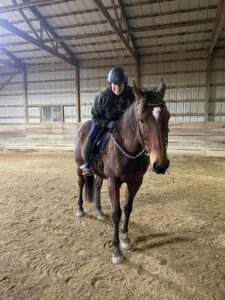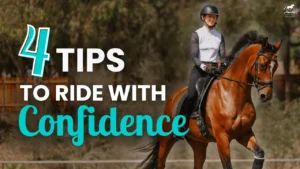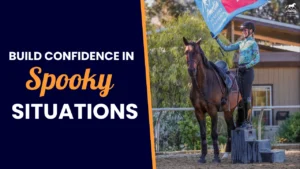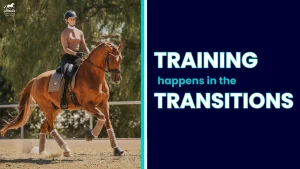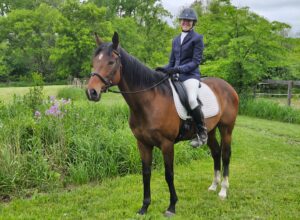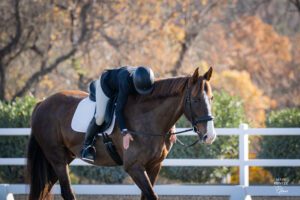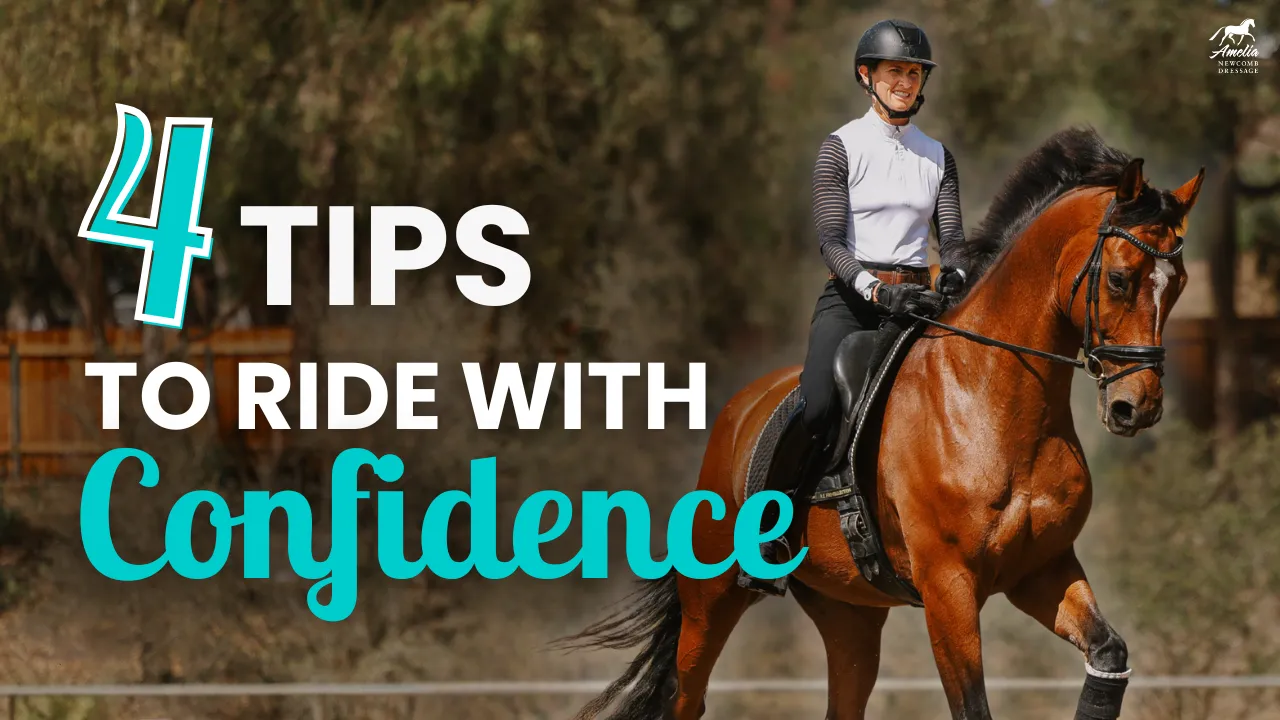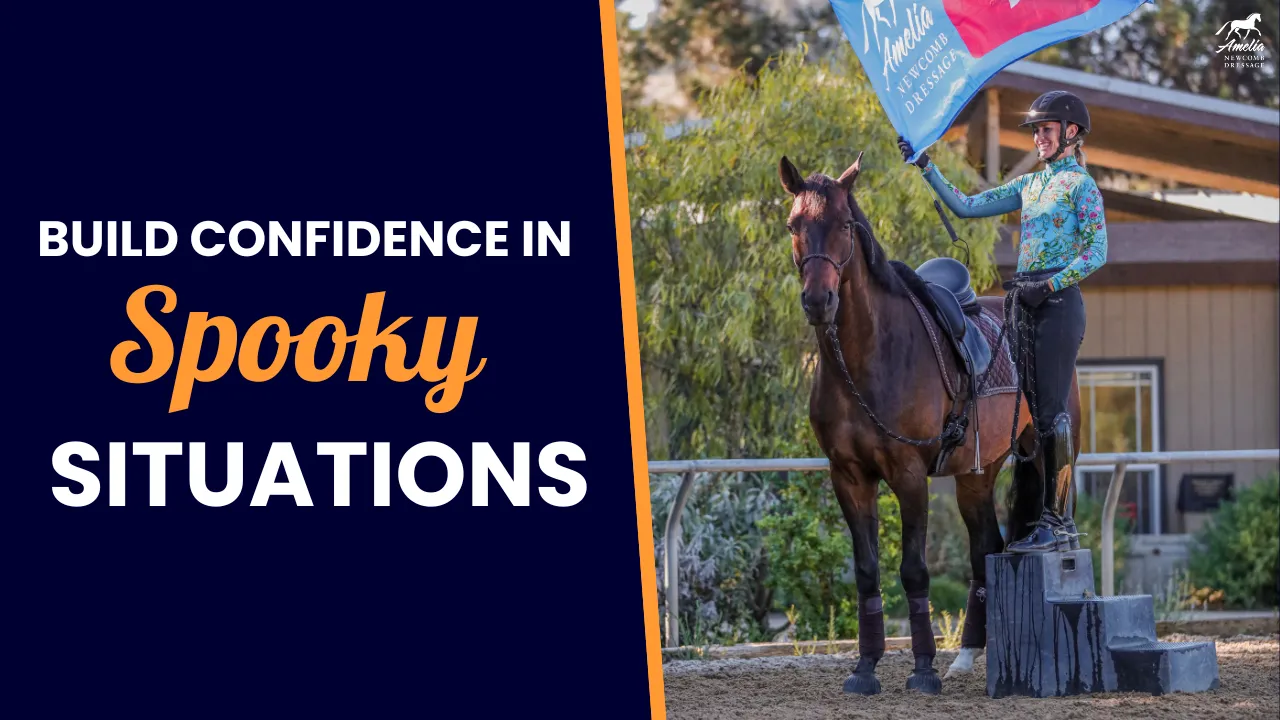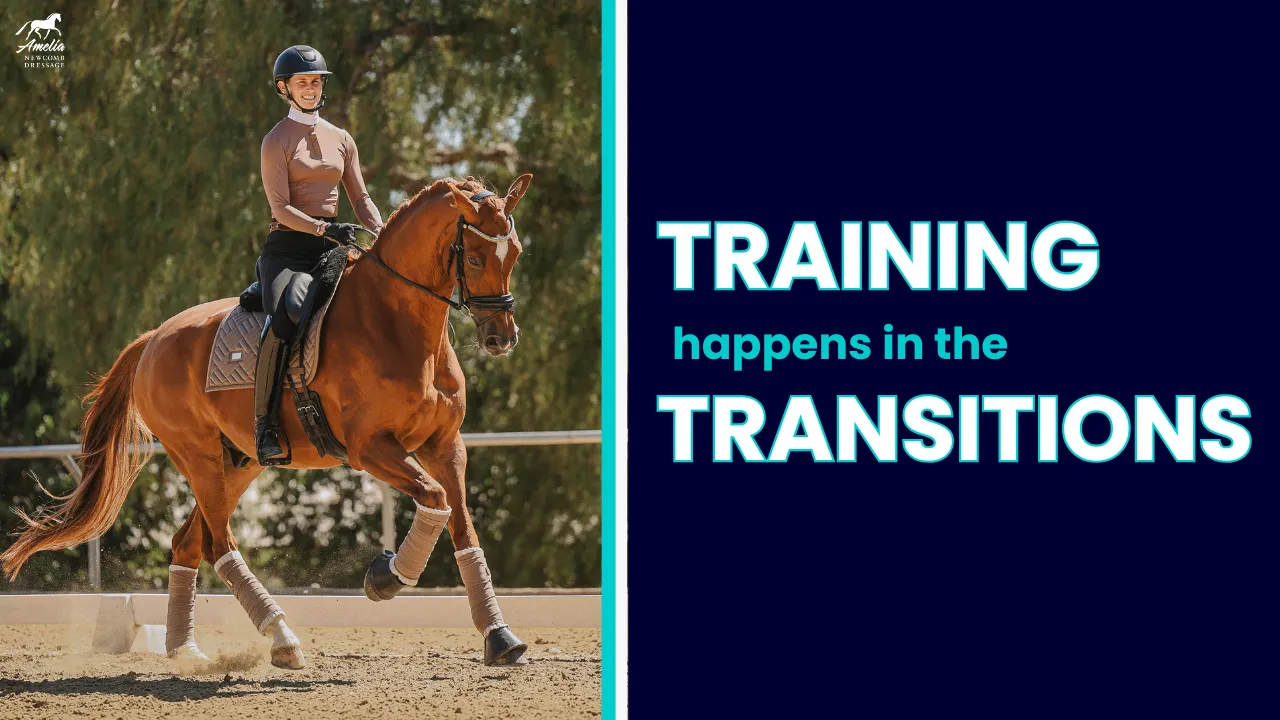Have you ever ridden a Pirouette? They’re a movement that is a lot harder to train and ride than they look. But once your horse understands what you’re asking, and you ride that floaty, light Pirouette – there’s not a better feeling!
Speaking of Pirouettes, my new course, Pirouettes with Amelia is now open for enrollment!! Inside the course, I will be sharing my secrets to training the Pirouettes (both walk and canter!). You will learn the prerequisites you need, simple and applicable training exercises, troubleshooting tips, and more! Plus, you’ll have the ability to ask me, Amelia, questions anytime as you progress with your horse. Learn more about the course here.*
*Sorry! You’ve missed this course enrollment. Don’t worry thought! Click the link and put your name on the list to be notified the next time the course opens again. We would love to have you.
Okay now back to the video. So what makes a good Pirouette? When you ride a Pirouette in your test, the judge scores you on your approach, your turn, and your exit. These are the key components that make the Pirouette movement, and focusing on these areas in your training will help you improve.
Approach – As you ride your line to your Pirouette, you want a straight approach with your horse in shoulder-fore. Focus on getting a nice, active canter on the spot as you near the point for your turn.
Turn – All you should have to do to get your horse to turn in the canter pirouette is sit slightly on your inside seat bone and look around your turn. You can, support with your outside rein near the withers and your inside rein slightly opening to help guide your horse around the turn. Just make sure you don’t cross your outside hand over the neck!
Exit – Ride out of your Pirouette from your inside leg, keeping your outside leg behind the girth so that your horse doesn’t swap leads. Position your horse in shoulder-fore again as you ride out of the Pirouette.
These three components are the basic steps of the canter pirouettes. Focus on these areas and your Pirouettes will be much better. Whenever you’re working on your Pirouettes, always focusing on maintaining the quality of the canter. When schooling, it is ok to ride larger Pirouettes to maintain a nice active canter with a good rhythm. If at any point your horse struggles with the Pirouettes, go back to the basics: confirm the walk pirouettes, work on the canter quality, and do some walk-canter transitions – all essential prerequisites for good canter pirouettes. After you have re-established the basics, then come back to the canter pirouettes and focus on making a quality approach, turn, and exit.
Watch the video where I demonstrate all this with Kensington. Let me know in the comments below if this helps you and your horse!
Happy Riding!
Amelia
P.S. Don’t forget, today is the LAST day to get the free Bonus Half-Pass Workshop when you enroll in my new course, 𝑃𝑖𝑟𝑜𝑢𝑒𝑡𝑡𝑒𝑠 𝑤𝑖𝑡ℎ 𝐴𝑚𝑒𝑙𝑖𝑎! Learn more here.*
*Sorry! You’ve missed this course enrollment. Don’t worry thought! Click the link and put your name on the list to be notified the next time the course opens again. We would love to have you.
